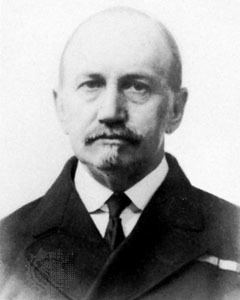Nationality United Kingdom Name David Hogarth Awards Founder's Gold Medal Influenced T. E. Lawrence Siblings Janet E. Courtney | Influences Arthur Evans Education University of Oxford Alma mater Oxford University Role Archaeologist | |
 | ||
Fields Archaeology, classics, education, journalism, fund directorship, museum curatorship, intelligence operations and directorship, diplomacy Institutions British School at Athens, Ashmolean Museum Died November 6, 1927, Oxford, United Kingdom Books The penetration of Arabia, The Ancient East, Devia Cypria, Hittite seals, The nearer East Similar People T E Lawrence, Arthur Evans, Bernard Pyne Grenfell, Flinders Petrie, Frederic Manning | ||
Prophet Muhammad (S)_In View of Eminent Non-Muslims_(8) David George Hogarth
David George Hogarth (23 May 1862 – 6 November 1927) was a British archaeologist and scholar associated with T. E. Lawrence and Arthur Evans.
Contents

During 1916 he was the acting director of the Arab Bureau, and was later responsible for delivering the Hogarth message.
Biography
D. G. Hogarth was the son of Reverend George Hogarth, Vicar of Barton-upon-Humber, and Jane Elizabeth (Uppleby) Hogarth. He had a sister three years younger, Janet E. Courtney, an author and feminist. In one of his autobiographical works, Hogarth claimed to be an antiquary who was made so, rather than born to it. He said, "nothing disposed me to my trade in early years." Those years included a secondary education, 1876–1880, at Winchester College, which claims to be, and was labelled by Hogarth as, "our oldest Public School."
Between 1887 and 1907, Hogarth travelled to excavations in Cyprus, Crete, Egypt, Syria, Melos, and Ephesus (the Temple of Artemis). On the island of Crete, he excavated Zakros and Psychro Cave. Hogarth was named director of the British School at Athens in 1897 and occupied the position until 1900. He was the keeper of the Ashmolean Museum in Oxford from 1909 until his death in 1927.
In 1915, during the First World War, Hogarth was commissioned with the temporary rank of lieutenant commander in the Royal Naval Volunteer Reserve and joined the Geographical Section of the Naval Intelligence Division. Professor Hogarth was appointed the acting director of the Arab Bureau, for a time during 1916 when Sir Mark Sykes went back to London. Kinahan Cornwallis was his deputy. Hogarth was close with T. E. Lawrence and worked with Lawrence to plan the Arab Revolt. He was appointed a Companion of the Order of St Michael and St George in the 1918 New Year Honours for his efforts during the First World War. Sykes befriended Hogarth, who had described India Government as believing they had an moral imperative to the British Raj as the best form of government and could not fail in their duty to impose it on a Province of Mesopotamia. The Arabists rejected this proposal vehemently; Sykes taking Hogarth's research as evidence of the uniquely different situation in the protectorate. The archaeologists knew it was clear that the Raj had no understanding of the different conditions, that there needed to be a specific "Arab Policy" for what had become a frontier of empire.
From 1925 to 1927 he was President of the Royal Geographical Society.
On 7 November 1894, Hogarth married Laura Violet Uppleby, daughter of George Charles Uppleby. His wife and mother shared a common great great grandfather, one John Uppleby of Wootton, Lincolnshire. Laura Violet was 26 at the time; David George, 32. They had one son, William David Hogarth (1901–1965).
